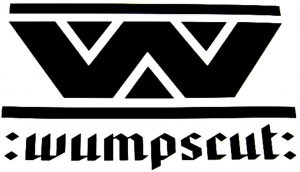When writing guides such these, it’s often hard to choose the next band to cover. Sure, I can use social media to gauge interest in specific projects, but there’s also got to be a personal motive to invest time and effort in researching and writing a piece this long. It’s a particularly big decision when you deal with exceptionally prolific artists – the timing has to be right, lest one get bogged down in a body of work too large to take in. And it just so happens I’ve been spending recent months investigating the dark and obscure corners of one of the largest back-catalogues my genres of choice have to offer. It’s time to take a look at Wumpscut. (Yes, officially the name is supposed to be bookended with colons, but if I do that here, my grammar checker will throw a wobbly).
Wumpscut was formed by the Bavarian DJ Rudy Ratzinger in 1991, inspired by the likes of Skinny Puppy, Leæther Strip and Dirk Ivens among others. The name means nothing – it was an entirely synthetic creation. His style has been referred to as both ‘dark electro’ or ‘electro-industrial’ – the terms are interchangeable as far as online discussion goes, and since few musicologists acknowledge so much as the existence of the style post-mid 1980s, it’s unlikely we’ll ever get a clear answer. Just accept that if you’re not into dark synthetic textures, hard electronic rhythms and angry vocals, dealing with some of the most unpleasant subject matters both fiction and reality have to offer, you might as well quit reading now.
Whilst this was very much a solo project, Rudy occasionally brought in guest musicians, mainly for female vocals, as well as sampling extensively from movies and bands from a variety of genres – the Alien movies are an obvious influence, inspiring as they did the project’s official logo. He also remixed other artists frequently and featured on many compilations. The one thing Wumpscut never did was play live. Rudy never had any desire to take the project to stage – neither did he feel like he could have done the music justice if he had done so.
I hope this guide will serve to be comprehensive, though what it won’t be is 100% exhaustive. This is, after all, a Listeners Guide, not a Collectors Guide or Fanatics Guide. Most Wumpscut albums have been released several times, in several formats, and there’s no way I can cover every version of all of them. Physical format collectors will have to check resources like Discogs.com for a full shopping list. Be prepared to shell out for the box set versions. My cupboard isn’t big enough for that kind of excess.
If you’re happy to stay virtual, I recommend Wumpscut’s Bandcamp page, which has just-about-everything for 5 Euros per album. The Concentrated Camp editions are the best way to get the most complete versions of each album, and there’s also sizeable compilations covering all the loose ends, of which there are many. Devoted fans can also get vinyl masters and ‘Inheritance’ editions (draft/demo versions from the DAT tape archives), but I’m not going to cover these – perhaps someone else will one day. Casual fans can stream most of the studio albums on the regular services, but the remixes and rarities are covered inconsistently, so you might not find every track I mention.
This may be too long for many of you, so you can just Skip To The End and just find out what songs are worth listening to. But if you’re up for the full and complete text – it’s time to get started.

